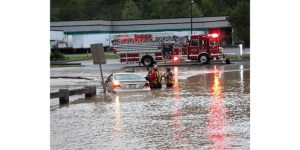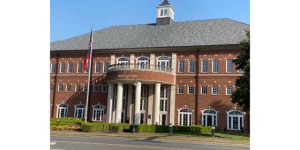Murray on My Mind keeping history alive
Published 10:50 pm Friday, June 6, 2008
History detective Tim Howard said he has “no clue” when his annual pilgrimage through back roads and graveyards became an excursion that brought together three groups of people — kids, adults and teachers.
Nevertheless, his hallmark adventure called Murray on My Mind has endured the passage of time, and after a quarter-century keeps on rolling with a yellow school bus and — in these modern days — amplified sound and voice-activated recording.
A veteran teacher at Bagley Middle School, Howard recollected how the whole week-long tour de force of Murray heritage began.
“I had to teach a special unit to get my permanent (teaching) certificate, and I chose Murray history,” he said. “So I did it with my classes first, and then that became a summer camp at Dalton Junior College. In 1987 or ‘88 the teachers wanted it for their staff development, then the local folks got jealous. I did one for the teachers and one for the public, then I just decided to combine it. I’ve done if for the adults for 22 years and for the kids even before that.”
This year, the troupe is up to 40 people intent on exploring their family backgrounds, or just learning something new that can be both intriguing and humorous.
Engagement in the theme of community history can be contagious. Before loading onto the bus, attendees brought up books where Murray is mentioned, including one of Eugenia Price’s “Savannah quartet” novels that features Spring Place, and “Company Aytch” by Confederate foot soldier Samuel R. Watkins, whose wartime journal described the eastern side of the Conasauga River as “Maury County.”
Montana Gray, 15, is in his second year of “chasing the past.”
“I like history,” he said Thursday morning. “It’s one of my favorite subjects.”
Asked what intrigues him the most, he answers, “Spring Place.”
“It’s where I live,” he says, “and it has a unique history with the Indians and people in the early 20th century. I live about a mile from the Chief Vann House (historic site) and that’s extremely interesting to me.”
For certainly not the first or last time, Howard has had an influence on a young person’s direction — Montana plans on majoring in history at college.
First-timers Renata Dunn and her daughter Andrea brought her husband Edward’s family Bible to the county Agriculture Center, where the tour departs each morning for a week in early June. The earliest entry they found that dates the heirloom was the notation of a marriage recorded in 1873.
“We also found a note about the purchase of some corn dated in 1894,” Dunn said excitedly, showing the small fragment of paper. “My husband’s grandfather, Homer Dunn, grew and sold corn and even has an ear of corn on his tombstone. So to find this note is amazing.”
Herman McDaniel has taken the “course” before, and has actually begun a history Web site at murraycountymuseum.com.
“Every year we go to new places and Tim tells new stories,” he said. “I’m trying to gather information for the Web site and also for the future.”
Modernity began to creep into the tour in a good way when retired pharmacist Roland Harbin and others had trouble hearing as attendance grew.
“I had to break away for a board of directors meeting (at First National Bank of Chatsworth) and got to thinking on the way how we could all hear better,” he recalls. “I suggested that the bank buy a portable public address system and donate it, and since then we’ve added a voice-activated recorder for posterity’s sake.
“Tim’s not going to be around to tell the stories forever, so Herman and I are going to record him, then transcribe the material and get it on the Web site.”
To get to one of the first sites, the bus weaved through carpet mills and then unloaded its participants before they walked up a small rise to a hidden cemetery. Steam rose from a smokestack nearby.
“This is what most people call the Williams cemetery, but at one time it was the Read cemetery,” Howard explained. He went on to tell the story of an Irish family with kinfolk buried there whose son was named “Seaborn” because he was birthed during the voyage to America.
Walking away from the shady burial ground, semi-retired teacher Ellen Callahan said she was taking the course to renew her teaching certificate as a long-term substitute for the next school year.
“The history of Murray County is very, very, very interesting,” the Whitfield native expressed. “Tim teaches things that I was not teaching in my history classes at Coker (Elementary), and I take those things back and teach them to my students.”
At a stop in Center Hill Cemetery, Howard gives a brief history of the Methodist church of the same name and also the old Boiling Springs Baptist that was once across now-busy Highway 225. He then leads his entourage over to the African-American area of the expansive graveyard and begins a discourse on the Branham family and their contributions to Murray culture, including a long line of educators.
“It all happened because a white woman in Spring Place, Rebecca Henry, broke the law and taught a slave how to read and write,” he said.
Curtis Adair last took part in Murray on My Mind in 1991.
“It’s amazing how many things are gone now, especially on the north end,” he says during a rest break at Grassy Mountain Baptist Church. “All the old historic buildings in Cohutta Springs are gone but I think one’s being moved. The old Treadwell house has been torn down. These historic structures are gone forever.”
Even though local restaurateur and Civil War buff Milton Clarke claims the Murray on My Mind man has said every year for the last few that this will be his last one, as long as Tim Howard’s around, local heritage is alive and well.





